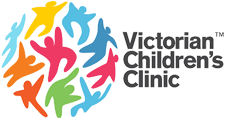Five things you need to know about headaches in school aged kids
With the end of the school year and Christmas almost upon us, quite a few parents have mentioned how tired and grumpy their kids are. I know mine certainly are! A few have noticed that their kids have been getting more headaches, which is not surprising as they become overtired, eat the wrong foods at class and kinder break-ups and often forget to drink enough water at this busy time.
Headaches are very common in school-aged kids, with about 20 per cent of those aged between five and 17 being prone to headaches. They’re usually not serious but can be quite distressing, and as a parent it can be hard to know what’s causing them and when to worry. More importantly, how can we teach our kids to understand and care for their bodies to prevent headaches from occurring?
So here are my five top tips for dealing with headaches:
1. Know what you’re dealing with
The main causes of headaches in kids are:
- Tension headaches are the most common and feel like a tight band around the top of the head causing a dull ache, usually most intense on both sides of the head. They’re caused by pressure or stress, can be either episodic or chronic, and don’t get better with sleep. Many teenagers may have suffered tension headaches through the recent exam period.
- Migraine headaches are more dull and throbbing and are usually felt on one side of the head or at the front, but can be felt on both sides. About 15 per cent of migraines start with an “aura” (seeing coloured or flashing lights, or wavy lines) or tingling in the face, arm or leg. Some children may stumble or find it hard to talk. Migraines are often associated with feeling sick or vomiting, tummy aches and looking pale, and can last from one hour to a day or two. Sleep usually helps a migraine go away.
- Physical causes or diseases cause less than five per cent of headaches. Headache caused by conditions such as viral or bacterial meningitis, concussion, significant head injury, and brain tumours are all accompanied by a wide range of other symptoms. These are rare and should not be the first thing you think of when your child has a headache.
2. Keep a headache diary
A diary will be very helpful in identifying headache triggers in your child, and helping them understand how to avoid them. Prevention is focused on getting enough rest, having a good nutritious diet and doing regular exercise.
The common triggers for migraine include:
- Being overtired, caused by going to bed too late or packing too much into one day.
- Not drinking enough water. Kids need to drink about five glasses of water per day, in addition to any fluids they lose playing sport. This is especially true in summer.
- Skipping meals, especially breakfast.
- Excessive screen time with the constant stimulation of lights, noise and quick movements on the screen.
- Muscle tension caused by stress or anxiety.
- Menstrual periods or the oral contraceptive pill.
- Foods such as chocolate or caffeinated drinks (e.g. cola, energy drinks). Some kids work out that they have specific triggers such as certain meats, processed food, cheeses, nuts, fruits such as avocado or even dairy products. A diary can be very helpful in identifying dietary triggers.
- A strong family history of migraine.
3. Know when to see your doctor.
Tests are not usually needed to determine the cause of a headache as the history and clinical examination are generally enough. As a rule, you should definitely see your doctor if your child’s headaches are increasing in frequency and/or severity, are worse in the morning or wake your child from sleep, are associated with more persistent vomiting, follow a knock to the head, are associated with fever or a stiff neck, or if you have noticed an obvious change in your child’s personality or behaviour. You should also see your doctor if the headaches are having a significant impact on your child’s life, causing them to miss school or other activities.
4. Understand how to effectively treat tension and migraine headaches.
Relaxation exercises or meditation can be very helpful, as can seeing a psychologist to help deal with stress and anxiety. These strategies should be discussed with your doctor or paediatrician. Also, don’t forget the importance of keeping your kids hydrated and encourage them to drink plenty of water. For migraine, medication at the start of the migraine works best. A combination of paracetamol and ibuprofen, or ibuprofen and a medication called a triptan, as well as a medication to reduce or stop the nausea and vomiting, can sometimes stop the headache or at least reduce the severity. Often children want to lie in a quiet, dark room. If the headaches are becoming very frequent (more than twice per week) with lots of missed school or activities, or more severe (excessive vomiting, more time in bed), then a preventative medicine that is taken daily may be needed.
5. Beware of headaches caused by using too much pain medication.
Called “rebound” headaches, these can be very painful and may start to occur every day, becoming a “chronic daily headache”. If this is happening, it’s best to stop all medications and speak with your doctor.
So, headaches are common in kids, but they can be prevented and managed well once you understand the triggers. Headaches are another reminder to slow down and look after ourselves, and our kids, and focus on general wellbeing. This usually means getting enough sleep, good food and exercise, and reducing our activities and screen time. I know this is a challenge for my family, especially over the Christmas period, and something that I am continuously working on!
Resources:
- Mindfulness app: www.smilingmind.com.au/Meditation-App
- Books to tackle anxiety and sleep: What to do when you worry too much and What to do when you dread your bed, both by Dawn Huebner
- Kids Health Info factsheet – Headaches in children and teenagers http://bit.ly/1mbW6U3
- Kids Health Info factsheet – Migraine headache http://bit.ly/1Q2cYJT


